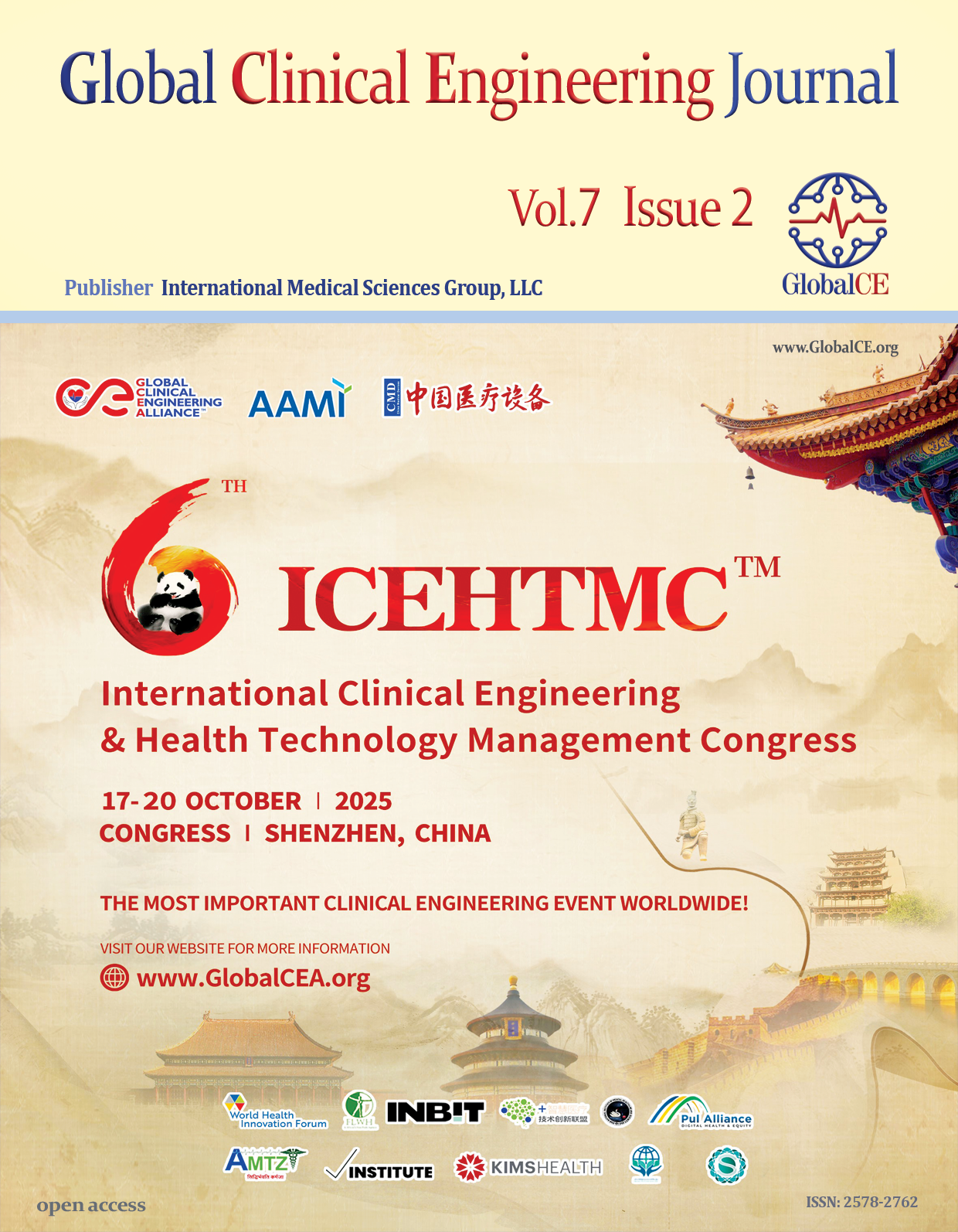Discussing the Clinical Value of Full-Range Auto Focus Endoscopic Cameras
Main Article Content
Keywords
Full-Range Auto Focus, Manual Focus, Auto Focus, Manual Zoom, Auto Zoom
Abstract
Objective: This study aims to explore the potential of full-range autofocus (FAF) technology to improve image clarity and operational ease in endoscopic procedures.
Methods: The paper analyzes the application and development of manual focus, autofocus, manual zoom, and auto zoom technologies in clinical endoscopy. The clinical value of FAF technology in endoscopy, including intelligent scene linkage and continuous optical lossless zoom, is discussed.
Results: The application of FAF technology significantly enhances medical diagnosis and treatment by providing clearer and more flexible imaging. This technology allows for seamless focusing from near to far distances, improving the accuracy and effectiveness of medical procedures.
Conclusions: The FAF technology represents a significant advancement in endoscopic technology. It not only improves diagnostic precision and treatment efficiency but also contributes to safer and more comfortable medical services, which can promote further development in the medical industry.
Downloads
Abstract 359 | PDF Downloads 231
References
2. Zhang, Y., Zhang, X., Shi, G.W., et al. Applications of liquid lenses in zoom systems. China Optics. 2013;6(1):47. https://doi.org/10.3788/co.20130601.0046.
3. Lee, S.W., Choi, M.C., Lee, E.S., et al. Zoom lens design using liquid lens for laparoscope. Opt Express. 2013;21:1751–1761. https://doi.org/10.1364/OE.21.001751.
4. Luo, X.F., Shi, Y., Guo, F., et al. Design of a large imaging plane wide-band zoom adapter optical system for endoscopes. Opt Express. 2025;33:2809–2823. https://doi.org/10.1364/OE.550768.
5. Du, L.H., Wang, L.Q., Ye, B., et al. Portable electronic endoscopic imaging system. Proc. SPIE 7850, Optoelectronic Imaging and Multimedia Technology. 2010;785003. Photonics Asia 2010, 2010, Beijing, China. https://doi.org/10.1117/12.869795.
6. Liu, H.B., Hu, Y., Li, Y.Z., et al. Review of Current Status and Development of Liquid Lens. Laser & Optoelectronics Progress. 2024; 61(9): 0900005. https://doi.org/10.3788/LOP231170.
7. Zhang, W., Jin, Y.T., Guo, X., et al. Design of an autofocus capsule endoscope system and the corresponding 3D reconstruction algorithm. J Opt Soc Am A. 2016;33:1970–1977. https://doi.org/10.1364/JOSAA.33.001970.
8. Mishra, K., van den Ende, D., Mugele, F. Recent developments in optofluidic lens technology. Micromachines. 2016;7:102. https://doi.org/10.3390/mi7060102.
9. Park, S-C and Park, J. Zoom lens design for a slim mobile camera using liquid lens. J Korean Phys Soc (JKPS). 2009;54:2274–2281. https://doi.org/10.3938/jkps.54.2274.
10. Jiang, Z., Zheng, Y., Wang, X., et al. Continuous optical zoom telescopic system based on liquid lenses. Optics Express. 2024;32:15269–15283. https://doi.org/10.1364/OE.520475.
11. Li, H., Cheng, X.M., Hao, Q. An electrically tunable zoom system using liquid lenses. Sensors. 2015;16:45. https://doi.org/10.3390/s16010045.
12. Bae J.K., Vavilin A., You J.S., et al. Smartphone-Based Endoscope System for Advanced Point-of-Care Diagnostics: Feasibility Study. JMIR Mhealth Uhealth. 2017;5(7):e99. https://doi.org/10.2196/mhealth.7232.






